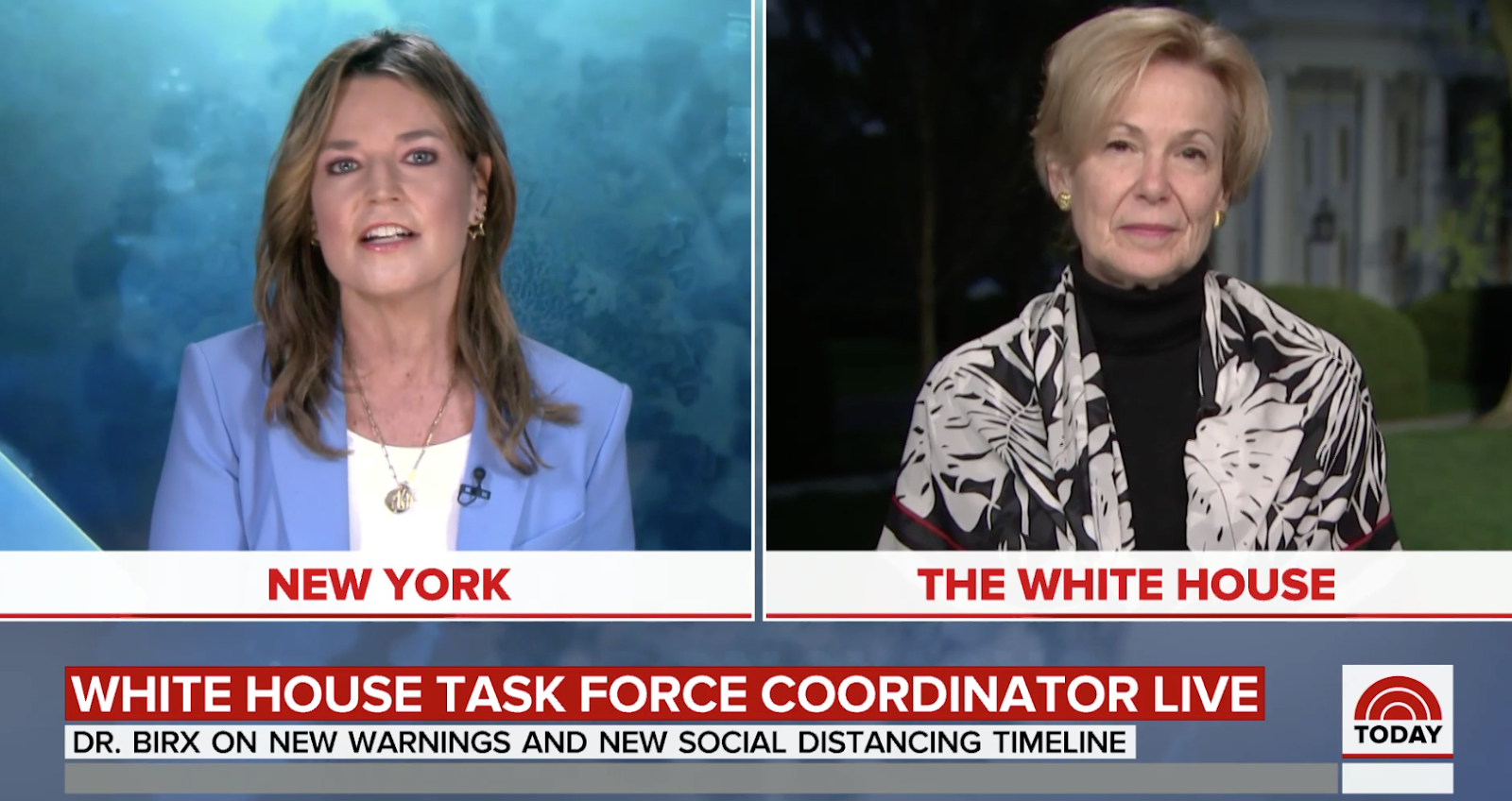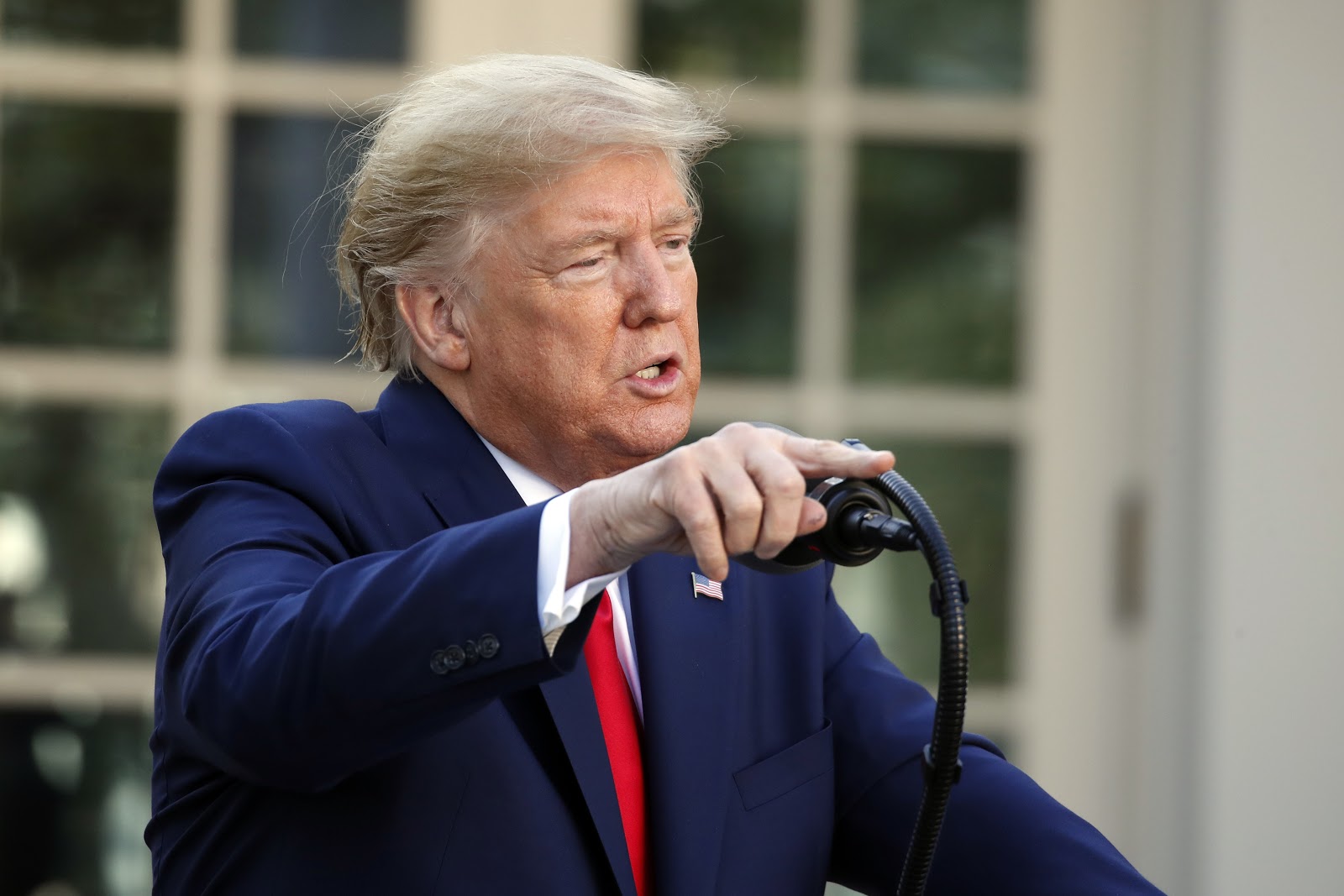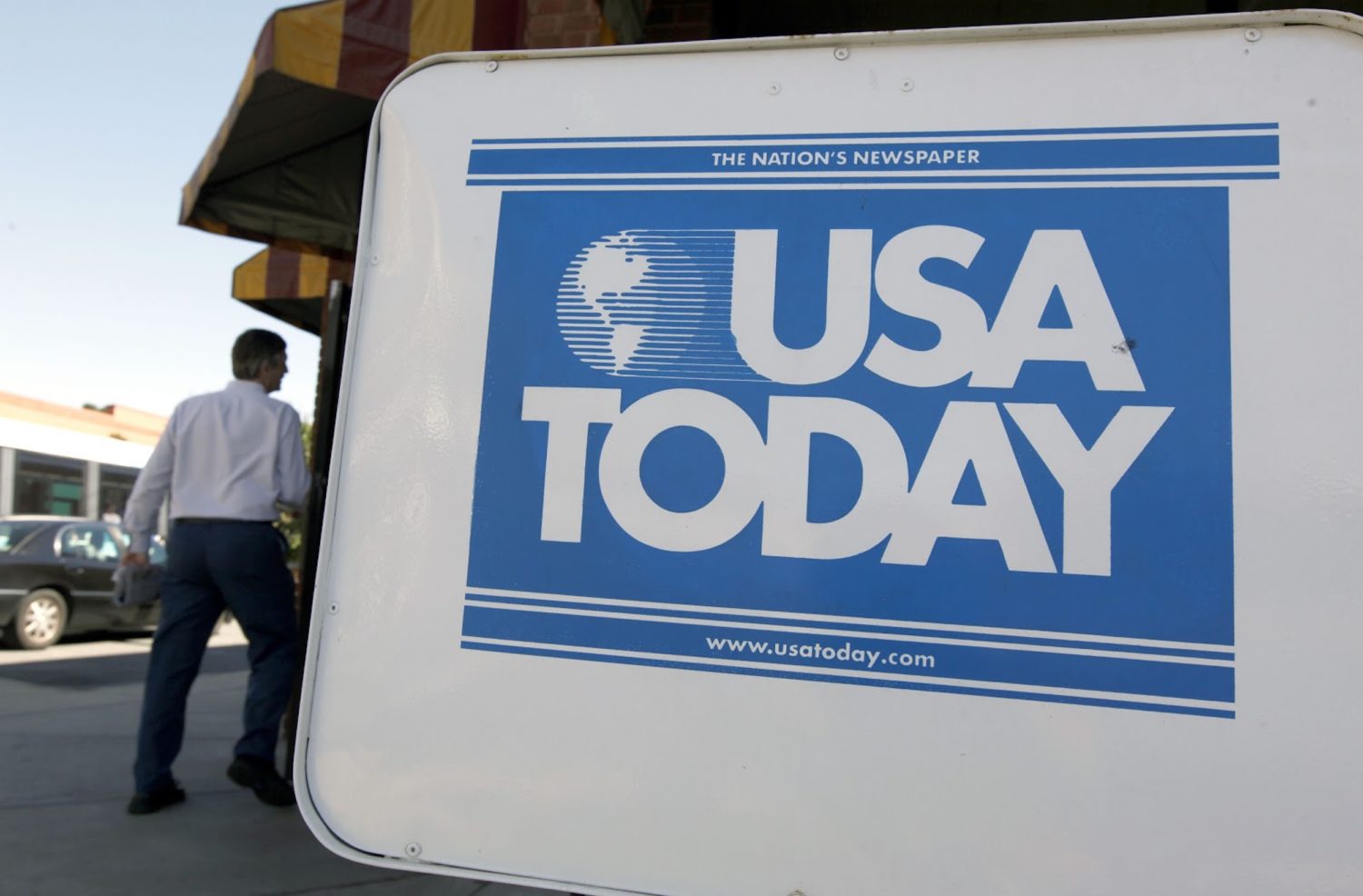The Poynter Report is our daily media newsletter. To have it delivered to your inbox Monday-Friday, click here.
We all saw it coming, but it doesn’t make it any less jolting — or depressing. Newspapers are getting slammed by the coronavirus.
A significant drop in advertising has already claimed many of the country’s alt-weeklies, which have been forced to temporarily (and perhaps, permanently) shutter without the ad revenue needed to keep them afloat. Now daily newspapers, already struggling before the coronavirus, are taking a hit.
Monday produced two grim newspaper stories. First, Gannett, one of the country’s leading newspaper chains, which owns USA Today and more than 260 daily U.S. newspapers, announced major cuts. Many staffers will see one week of unpaid furloughs for each of the next three months, while executives will take a 25% pay cut.
“Everyone will be touched by these changes in some form,” said Gannett operating CEO Paul Bascobert in a memo to staff. “For some it will be economic, for others it will mean covering the work of a colleague on furlough, for many it will be both.
“Our goal is to ensure that when we get through these difficult times, we emerge fully able to continue our important role serving our readers, clients and communities. This is the mission that binds us and tests our resolve.”
Meanwhile, among the first newspapers to take this drastic measure due to the coronavirus, the Poynter-owned Tampa Bay Times announced, starting next week, it will begin printing just two days a week: Wednesdays and Sundays.
In a memo to staff, Times chairman and CEO Paul Tash said advertising cancellations caused by the coronavirus in just the past two weeks have cost the Times more than $1 million with “no sign of quick recovery on the horizon.”
In an interview with Poynter media business analyst Rick Edmonds, Tash said, “I do hope and think that readers will be more understanding when they see change in just about every other aspect of their lives. Some may be relieved that we are preserving two days of print and delivery. This is also a good time to gently guide our readers toward the electronic formats. We are changing the form of delivery, but the journalism is as strong as ever.”
Which brings me to …
The Tampa Bay Times is not the first newspaper to cut print days. Shops in Pittsburgh and Detroit and many in the McClatchy chain had cut print days and/or stopped daily home delivery well before anyone even heard of the word “coronavirus.”
Cutting days saves huge costs in newsprint, production and delivery, and preserves at least a couple of days for valuable print advertising. Other newspapers almost certainly will follow the Times’ lead. It’s reasonable to believe that papers will not print seven days a week after life returns to normal.
While it might seem a bit optimistic, perhaps there is a silver lining in all this, as long as “this” doesn’t last too long.
Monday’s news certainly is not good, but I believe Tash hit on something crucial for the longterm survival of newspapers: the digital product. The Times is not killing off five days of journalism. The website will continue producing quality journalism 24 hours a day, seven days a week. It just won’t land on front porches and driveways every day. But it will be on phones and computers whenever a reader wants. Tash said digital traffic at the Times is running two to three times heavier than normal.
Most places are already placing less emphasis on print while upping their digital products. Local newspapers are long overdue in going further down that path. Without the confines of deadlines, space and all the other limitations that print products bring, newspapers can use this as an opportunity to fully embrace digital storytelling, including video, audio and other interactive products.
Yes, many traditional readers prefer print — the feel of an actual newspaper to read over morning coffee — but times change. Readers will eventually have to fully embrace the digital product. But maybe before that happens, newspapers themselves have to fully embrace it.
Maybe Monday’s news in Tampa Bay shouldn’t be seen as something lost, but an opportunity gained for local news outlets to move into the next generation of newsgathering.
However, the reality …
Let’s be clear, newspapers cannot survive indefinitely under the current conditions. Most newspapers still haven’t figured out the secret sauce of making the digital product work enough to sustain the entire operation. The coronavirus pandemic has accelerated newspaper issues and it can’t end fast enough. One news publisher told Nieman Lab’s Ken Doctor, “If it’s a couple of months, we’ll make it through. If it’s six months, all bets are off.”
Tough decisions will be made over the coming weeks. Just as many outlets might follow the Tampa Bay Times’ decision to cut back on print, many outlets might follow Gannett’s lead on payroll deductions.
And it’s not just newspapers. Vice cut pay for top earners Monday, as well as announcing other cost-saving measures, according to The Daily Beast. In addition, The Maven is laying off 9% of its staff, meaning several Sports Illustrated staffers are out of jobs.
Canadian newspapers are in trouble, too. Toronto Star contributor Daniel Bernhard called it a “six-alarm fire” and begged the Canadian government to step in to help.
“Ottawa must understand that we are staring down the end of Canadian private media as we know it,” Bernhard wrote. “With few exceptions, we’re talking about the extinction of the entire Canadian media industry. No democracy can survive without a functioning press.”
Keep ‘em coming

Dr. Deborah Birx (right), response coordinator for the White House Coronavirus Task Force, interviewed by “Today” show co-host Savannah Guthrie on Monday. (NBC News)
Two of the leading, most-trusted voices when it comes to the coronavirus are Dr. Anthony Fauci, the director of the National Institute of Allergy and Infectious Diseases, and Dr. Deborah Birx, response coordinator for the White House Coronavirus Task Force.
While both offer valuable information during their cameos at the daily White House news conferences, they are especially effective and insightful when interviewed one-on-one. Perhaps they speak more freely when they aren’t standing near the president, or perhaps being interviewed by just one person lends itself to more illuminating answers.
For example, Birx stunned even “Today” show co-host Savannah Guthrie on Monday when she said, “If we do things together well, almost perfectly, we could get in the range of 100,000 to 200,000 fatalities (in the U.S.).”
“You kind of take my breath away with that,” Guthrie said, “because when I hear you (you’re) saying that’s sort of the best-case scenario.”
Birx added, “We’re not sure all of America is responding in a uniform way.”
Birx also appeared on “CBS This Morning,” saying, “Certainly we’re hoping there aren’t more New York Cities and New York metro areas around the country, but we have to plan for that and really tell the American people that they have to do more to stay inside.”
These are the kind of interviews that are invaluable to the American people. Credit goes to Birx and Fauci, as well as the journalists asking the questions.
More coverage
NBC News continues its series of live primetime specials on the coronavirus pandemic tonight at 10 p.m. Eastern on NBC, MSNBC and NBC News NOW. “NBC News Special Report: Coronavirus Pandemic” is scheduled to be hosted by Savannah Guthrie and Hoda Kotb.
As in past specials, viewers can submit questions to the NBC Coronavirus Crisis Team, which includes NBC correspondent Dr. John Torres, NBC News’ contributor and virologist Dr. Joseph Fair, NBC News investigative correspondent Vicky Nguyen and NBC News senior business correspondent Stephanie Ruhle.
On the air

President Donald Trump speaks about the coronavirus in the Rose Garden of the White House on Monday. (AP Photo/Alex Brandon)
The debate continues: to air or not to air President Donald Trump’s daily White House press conferences.
Several times over the past couple of weeks I’ve defended the networks’ decisions to air the press conferences live and in full. (You can read why here and here.) However, I’m OK with networks airing their evening news broadcasts, and local network affiliates airing local news, if Trump’s news conferences are going on at the same time. After all, at that point, news is crucial and viewers can switch to CNN, Fox News, MSNBC and C-SPAN for Trump coverage.
But CNN boss Jeff Zucker admitted to staff that this has been a hot topic at the network. According to The Daily Beast’s Maxwell Tani, Zucker has told staff that he has probably spent more time on this topic than any other in the past couple of weeks, but still defends the decision to show the president’s press conferences. This comes after reports that some staffers at CNN and MSNBC have argued the press conferences should not be shown because they too often involve misleading statements and possibly dangerous information from Trump.
Tani wrote, “According to multiple sources, Zucker argued on the staff call that it is important for viewers to hear critical information from the administration’s public-health experts like Drs. Anthony Fauci and Deborah Birx, and for the CNN audience to hear the president answer tough questions from journalists including the network’s own.”
However, it should be noted that CNN cut away from Monday’s news conference when Trump introduced supporter Mike Lindell, founder of MyPillow. Clearly, CNN wasn’t about to air what amounted to a free commercial. The network returned to the press conference when reporters began asking questions.
Superb coverage
Another outlet doing superb coronavirus coverage: National Geographic. Be sure to check out Nina Strochlic and Riley D. Champine’s excellent piece that looks back at how some cities flattened the curve during the 1918 flu pandemic. It includes a warning to not do a victory lap too soon, or else a city risks a return of a virus that is worse than ever.
Hot type
- My favorite piece on Monday comes from former Tulsa World photographer Brandi Simons, who chronicles the lives of her teenage daughters during coronavirus social distancing.
- So, did Trump question the governor’s requests for ventilators? PolitiFact is on the case.
- The Atlantic’s McKay Coppins with “The Social-Distance Culture War Has Begun.”
Have feedback or a tip? Email Poynter senior media writer Tom Jones at tjones@poynter.org.
More resources for journalists
- Coronavirus Facts Alliance (global database of fact-checks).
- Covering COVID-19 with Al Tompkins (daily briefing).
- Trauma Management: March 31 at 8 p.m. — National Association for Hispanic Journalists (resources for reporting)
- Using Data to Inform and Improve Your Journalism – Including NEW Information on Tracking Coronavirus Coverage: March 31 at 2:00 p.m. — News Media Alliance and API (resources for reporting)
Want to get this briefing in your inbox? Sign up here.







